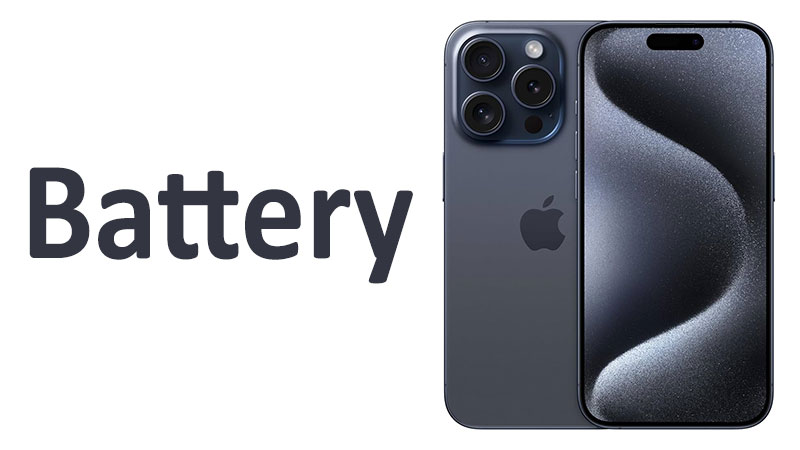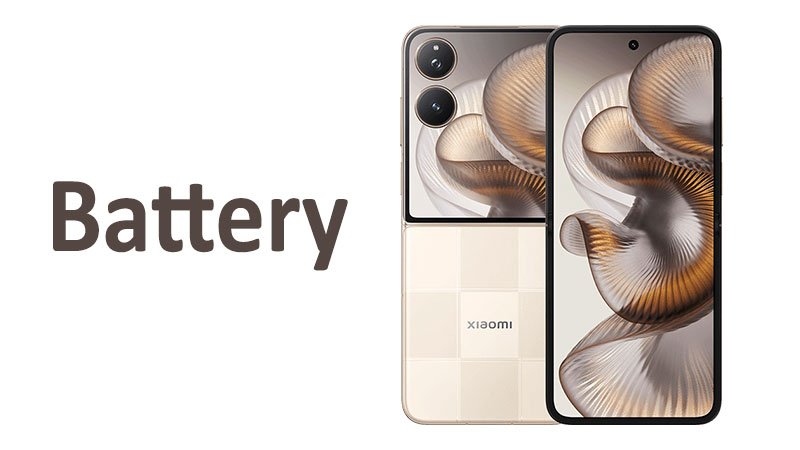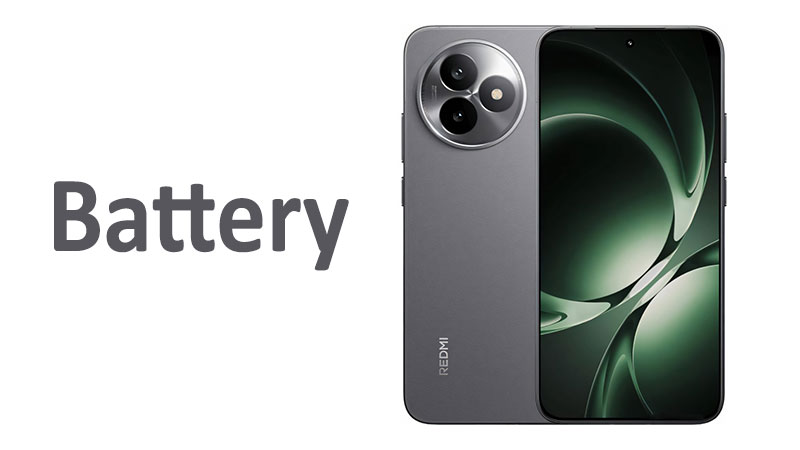The Apple iPhone 15 Pro battery specifications are central to the user experience. Understanding the power system is critical for potential buyers. This article provides a comprehensive and detailed analysis of the battery capacity, wired and wireless charging standards, and overall real-world endurance of the iPhone 15 Pro model. We will explore how Apple balanced physical size, component efficiency, and charging versatility to deliver this year’s Pro model power solution.
Technical Specifications and Capacity of the Power Core
The iPhone 15 Pro carries a significant piece of hardware: its internal battery. This lithium-ion cell determines how long the device can stay operational. It is the foundation of the phone’s portability and usability.
Exact Capacity Breakdown
The Apple iPhone 15 Pro utilizes a 3274 mAh lithium-ion battery. This capacity is slightly larger than the preceding model. However, the increase is modest. Apple relies heavily on internal component efficiency for improved battery life. They do not typically pursue the largest possible battery size. This design decision helps maintain the phone’s slim profile and manageable weight. The physical capacity is just one part of the endurance equation.
Comparison: iPhone 15 Pro vs. iPhone 14 Pro
The iPhone 14 Pro featured a 3200 mAh battery. The 15 Pro, with its 3274 mAh cell, represents an increase of about 2.3 percent. This small boost is not enough to dramatically alter daily usage alone. The true gains come from the processor. The A17 Pro chip is built on a more efficient 3-nanometer process. This efficiency is the real game-changer for battery longevity. It allows the phone to draw less power for the same tasks. Therefore, the small capacity bump combines with chip efficiency to deliver noticeable, though not massive, real-world improvements.
Why Capacity Isn’t Everything
A high-traffic keyword is iPhone 15 Pro battery life. Many users mistakenly focus only on the mAh number. However, software and hardware optimization are arguably more important. Apple’s integrated design ensures the operating system, iOS, manages power meticulously. The device shuts down background tasks efficiently. It only activates necessary cores when demanded. This optimization maximizes the utility of the 3274 mAh capacity.
Wired Charging Performance: Speed and Efficiency
The biggest external change to the iPhone 15 Pro is the adoption of the universal USB-C port. This shift has standardized charging across many modern devices. It also dictates the wired charging protocols the phone supports.
USB-C and Power Delivery 2.0 (PD2.0)
The iPhone 15 Pro uses the USB Power Delivery (PD) standard. Specifically, it supports the PD2.0 protocol for fast charging. This means the phone can dynamically negotiate the power drawn from a compatible charger. The charger must also support the PD standard. Apple’s official claim is that the iPhone 15 Pro can charge to 50% in 30 minutes. This requires a 20W (or higher) USB-C power adapter. Many users prefer this quick half-charge for convenience. This speed places the iPhone 15 Pro firmly in the category of modern fast-charging smartphones.
The Charging Curve Explained
It is important for users to understand the fast charging process. The claim of 50% in 30 minutes refers to the initial charging phase. Charging speed is not linear. It rapidly accelerates when the battery is low. The speed then tapers off significantly as the battery approaches 80%. This slowdown is intentional. It protects the battery’s health and longevity. The final 20% can take as long as the first 50%. This is normal behavior across all smartphones utilizing lithium-ion technology.
Specialized Comparison: Android Fast Charging
The iPhone 15 Pro’s 20W-class fast charging is competitive but not class-leading. Many high-end Android phones offer significantly faster charging speeds. Some competitors boast 65W, 80W, or even 120W charging. These can often reach 100% in under 30 minutes. Therefore, if iPhone 15 Pro charging speed is your primary concern, some Android rivals may appeal more. However, Apple prioritizes battery longevity. Extremely fast charging generates more heat. This heat can degrade the battery over time. Apple’s approach represents a balance between speed and long-term health.
Pros and Cons of Wired Charging
Pros:
- Convenience: The USB-C port is now universal. This simplifies the cable situation for multi-device owners.
- Decent Speed: Achieving a 50% charge in 30 minutes is sufficient for most daily needs. This is a noticeable improvement over older, slower iPhone models.
- Battery Health Focus: The moderate charging wattage helps preserve the long-term health of the 3274 mAh cell.
Cons:
- Adapter Not Included: The required fast charger (20W+) must be purchased separately. This adds to the overall cost of ownership.
- Slower Than Rivals: It trails behind many competitor flagships in terms of peak charging wattage and time to reach 100%.
Wireless Charging Ecosystem: MagSafe and Qi2
Wireless charging offers unmatched convenience. The iPhone 15 Pro supports multiple wireless charging standards. This flexibility enhances its utility in various settings.
15W MagSafe Charging
The primary high-speed wireless standard is MagSafe. MagSafe is an Apple-proprietary technology. It uses an array of magnets embedded in the back of the phone. These magnets align the phone perfectly with a compatible MagSafe charger. Perfect alignment is crucial for maximum efficiency and speed. The iPhone 15 Pro can achieve up to 15W of power using a certified MagSafe accessory. This speed is equivalent to its maximum sustained wired charging rate. MagSafe is the most reliable way to wirelessly charge the device quickly.
The New Qi2 Standard Integration
A major addition for the iPhone 15 series is support for Qi2. This is a newer, open standard for wireless charging. It adopts the magnetic alignment technology pioneered by MagSafe. The iPhone 15 Pro is capable of 15W charging over Qi2. This feature, however, required the iOS 17.2 update to be fully unlocked. This development means more third-party accessories can offer 15W wireless charging. Users are no longer limited to MagSafe-branded accessories for top speed. This provides greater choice and potentially lower costs for consumers.
Standard Qi Wireless Charging
The iPhone 15 Pro also supports the older, non-magnetic Qi standard. This is the most common wireless charging standard. However, the power is capped at 7.5W when using a standard Qi pad. This is significantly slower than the 15W provided by MagSafe or Qi2. This difference highlights the benefit of using magnetic alignment. It ensures optimal energy transfer. A standard Qi charger is suitable for overnight charging where speed is irrelevant.
Specialized Comparison: Wireless Ecosystem
Apple’s control over the MagSafe and Qi2 implementation is a strong suit. Competitors often rely solely on the generic Qi standard. This results in slower, less consistent wireless charging. The magnetic connection on the iPhone 15 Pro makes dropping the phone onto a charger a hassle-free experience. This reliability is a key selling point. The 15W wireless charging speed provides a quick top-up throughout the day. This level of speed and convenience is a significant factor when assessing the best wireless chargers for iPhone 15 Pro.
Reverse and Auxiliary Charging Capabilities
The new USB-C port brings a subtle but important feature: reverse charging. This allows the iPhone 15 Pro to act as a temporary power bank for other small devices.
4.5W Reverse Wired Charging
The iPhone 15 Pro supports 4.5W reverse wired charging. This means it can supply power to another device via a USB-C cable. This low wattage limits the feature’s utility. It cannot effectively charge another large smartphone. It is designed for specific, lower-power Apple accessories.
Practical Use Cases for Reverse Charging
The 4.5W reverse feature is perfect for charging AirPods or an Apple Watch. Imagine traveling with only your iPhone and a pair of wireless earbuds. You can use the iPhone’s main battery to top up the accessory’s smaller battery. It is an emergency power source. It keeps essential accessories operational when away from a wall socket. This capability adds a layer of practicality to the phone’s power system. It is a convenience factor rather than a core feature.
Buyer’s Note on 4.5W
Buyers should have realistic expectations for this feature. Do not expect to fully charge another phone. The 4.5W rate is slow. It will drain the iPhone 15 Pro battery quickly relative to the small capacity it provides. It is an auxiliary feature, best used sparingly. It serves as a testament to the increased power flexibility of the USB-C port.
Analyzing Real-World Battery Life (Endurance and Optimization)
The ultimate metric for any battery is its real-world performance. Users want to know how long the iPhone 15 Pro battery will last under typical stress.
The Role of the A17 Pro Chip
The heart of the iPhone 15 Pro’s efficiency is the A17 Pro chip. Its advanced manufacturing process allows for incredibly low power consumption during idle and light tasks. This translates directly to better standby time. The chip’s Neural Engine and specialized cores also handle machine learning tasks more efficiently. This reduces the strain on the battery during photo processing and facial recognition. This efficiency is why the 3274 mAh battery performs better than its raw number suggests.
Typical Usage Scenarios
Apple provides estimates for various usage scenarios. The iPhone 15 Pro is generally rated for:
- Video Playback: Up to 23 hours.
- Video Streaming: Up to 20 hours.
- Audio Playback: Up to 75 hours.
In heavy daily use—including social media scrolling, demanding mobile gaming, and extensive use of the always-on display—users typically experience a full day of battery life. For a vast majority of users, the iPhone 15 Pro will last from morning until bedtime. However, heavy users or mobile gamers may require a mid-day top-up.
Specialized Comparison: 15 Pro vs. 15 Pro Max Endurance
The iPhone 15 Pro Max has a significantly larger battery. It offers noticeably longer endurance. The Max model is the undisputed leader in iPhone 15 battery life. Buyers prioritizing multi-day use or absolute maximum screen-on time should choose the Pro Max. The standard Pro model strikes a balance between size and power. It offers great battery life in a more compact, pocket-friendly design. This choice depends on whether size or endurance is more important to the individual user.
Pros and Cons of the iPhone 15 Pro Battery System
A balanced perspective is necessary for an informed purchasing decision. The iPhone 15 Pro battery system has clear strengths and weaknesses. These should be considered carefully.
Key Advantages (Pros)
- Chip Efficiency: The A17 Pro chip maximizes the life span of the 3274 mAh cell. This provides excellent standby time and sustained performance.
- Universal Port: The shift to USB-C simplifies charging logistics. It allows for compatibility with countless existing cables and adapters.
- Dual 15W Wireless Charging: Support for both MagSafe and the new Qi2 standard offers fast, reliable 15W wireless power. This expands the ecosystem significantly.
- Fast Wired Top-Up: The ability to reach 50% charge in 30 minutes provides crucial speed for users on the go.
- Reverse Charging Utility: The 4.5W reverse wired capability is useful for small accessories like AirPods and Apple Watch.
Notable Limitations (Cons)
- Moderate Capacity: The 3274 mAh size is modest compared to some high-capacity competitor devices. The endurance is good, but not record-breaking.
- Slower Peak Wired Charging: The 20W charging rate is significantly slower than what many Android flagships provide. Users moving from those devices will notice the difference.
- Adapter Cost: The necessary 20W power brick is not included in the box. This requires an extra purchase to utilize fast charging.
- Max Model Difference: The difference in battery life between the 15 Pro and the 15 Pro Max is substantial. This can make the Pro feel less capable by comparison.
Essential Information for Buyers and Users
There are several important factors a buyer should know beyond the core specifications. These details affect long-term ownership and daily usability.
Buying the Right Charger
To achieve the advertised 50% in 30 minutes charging time, users must purchase a USB-C power adapter that provides at least 20W of power. Using an older, lower-wattage charger will result in much slower charging times. Many third-party 30W or higher power bricks are affordable and compatible. They will deliver the maximum speed the iPhone 15 Pro can accept. Investing in a quality 20W+ adapter is non-negotiable for fast charging.
Monitoring Battery Health
Apple includes a robust Battery Health feature within iOS. This allows users to monitor the maximum capacity of their battery relative to when it was new. Lithium-ion batteries degrade over time and charging cycles. The iPhone 15 Pro includes settings to optimize charging. This includes an option to cap the charge at 80%. This specific feature is intended to extend the battery’s overall lifespan. Users should actively utilize these settings to protect their investment.
Understanding Thermal Management
Heat is the biggest enemy of battery longevity. The iPhone 15 Pro manages heat through hardware and software controls. Using a high-wattage charger in a warm environment can cause the phone to slow the charging speed. This is not a malfunction. It is a protective measure. Users should avoid charging the phone under pillows or in direct sunlight. Maintaining cool charging temperatures is key to maximizing iPhone 15 Pro battery life over several years.
The USB-C Cable Distinction
Not all USB-C cables are the same. The cable included with the iPhone 15 Pro is a standard USB 2.0 cable. It can handle the power required for fast charging. However, it cannot support the highest data transfer speeds of the Pro model. For charging, any certified USB-C cable is sufficient. For high-speed data transfer, a Thunderbolt or USB 3.0+ cable is required. This is an important distinction for professionals who move large files.
Conclusion
The Apple iPhone 15 Pro battery system is defined by its focus on efficiency and versatility. The 3274 mAh capacity, while modest in number, is maximized by the powerful and efficient A17 Pro chip. This combination ensures reliable all-day power for the average user.
The charging experience is marked by the welcome shift to USB-C. It provides a convenient 50% top-up in 30 minutes. This is sufficient for daily use. The support for both MagSafe and the emerging Qi2 standard ensures broad compatibility with fast 15W wireless chargers. This is a significant advantage in the wireless charging landscape.
Ultimately, the iPhone 15 Pro battery system is not about raw speed or size. It is about intelligence. It prioritizes long-term battery health and thermal management over winning fast-charging races. Buyers who prioritize a compact, efficient, and versatile power solution will be very satisfied. Those who demand the absolute longest battery life should opt for the iPhone 15 Pro Max. The Pro model successfully balances power and portability. It is a highly capable power solution for a premium device.
Frequently Asked Questions (FAQ)
What is the exact battery capacity of the iPhone 15 Pro?
The iPhone 15 Pro has an internal lithium-ion battery with a capacity of 3274 mAh. This is a small increase over the previous generation model.
How fast can the iPhone 15 Pro charge with a wired connection?
It supports USB Power Delivery (PD) 2.0. This allows the phone to charge to approximately 50% capacity in just 30 minutes when using a 20W or higher power adapter.
Does the iPhone 15 Pro support the new Qi2 wireless charging standard?
Yes, the iPhone 15 Pro supports the magnetic-alignment Qi2 standard. It charges at speeds up to 15W, but this feature requires the iOS 17.2 software update to be fully enabled.
Can the iPhone 15 Pro charge other devices wirelessly?
No, the iPhone 15 Pro does not support wireless reverse charging. It can only charge other small accessories like AirPods using the 4.5W reverse wired charging feature via a cable connected to the USB-C port.
Will the iPhone 15 Pro battery last a full day of heavy use?
For most users, the combination of the 3274 mAh battery and the efficient A17 Pro chip ensures all-day battery life. However, heavy users and continuous mobile gamers might require a quick top-up during the day.



